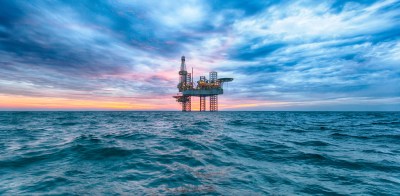Data as of April 30, 2021, unless otherwise noted.
Performance (total returns)
| Benchmarks | April 2021 | YTD |
| Alerian MLP Index (AMZX) | 7.15% | 30.67% |
| Alerian Midstream Energy Select Index (AMEIX) | 5.93% | 27.87% |
| ICE BofAML U.S. High Yield Energy Index (HY Energy) | 2.48% | 6.45% |
| S&P 500 Energy Index (S&P Energy) | 0.59% | 31.63% |
Performance data quoted represents past performance and is no guarantee of future results. An investment cannot be made directly in an index.
Midstream makes a comeback: Leadership in the energy sector has shifted over the past two months from commodity price-sensitive upstream producers to midstream firms. S&P Energy climbed 0.59% in April, materially underperforming the S&P 500 for the second consecutive month after leading the market to start the year. The AMZX and AMEIX rose 7.15% and 5.93%, respectively, as the prospect of oil prices stabilizing above $60/bbl offers a strong backdrop for oil and gas production in North America. Additionally, earnings reports for midstream firms continue to be more resilient than those of upstream producers. HY Energy rose 2.48% on the month, outperforming the broader index by 137 bps. Energy bond spreads declined for the seventh consecutive month and ended April at their tightest level since November 2018. WTI crude prices rose by about $4.42 to $63.58/bbl, the highest monthly close in two years. The futures curve moved further into backwardation in April, suggesting a tight supply/demand environment.
What a difference a year makes: With Q1 data now available, we examined how production and consumption have shifted across the world over the past year. The world produced 93.2 MMbpd in Q1 2021, an improvement over the past three quarters but 7.5% below the Q1 2020 level. The brunt of this supply decrease has largely been borne by the three largest factions in oil production: the U.S. (-12.4%), OPEC (-9.9%) and Russia (-9.2%). The rest of the world, which includes Canada and China, has seen production fall by only -1.2%. Importantly, the declines for OPEC and Russia are voluntary and meant to support prices, while in the U.S. they are mostly market-driven. The story is a bit different on the demand side. After falling by more than 10% from Q1 to Q2 2020, global consumption has rebounded to levels from a year ago; importantly, demand reacted to the pandemic more quickly than supply, and Q1 2020 was already below 2019 levels. From a composition standpoint, developed markets are still experiencing lower demand, while emerging market countries have seen an increase. Canada (-6.0%), Europe (-5.7%) and the U.S. (-4.1%) have been hit the hardest as a result of COVID-19 outbreaks and related restrictions put in place by governments. Asia has picked up the slack, with China (+8.4%) leading the world in crude demand growth. EIA projections see supply adjusting to higher demand and recapturing pre-pandemic levels by early 2022, with most of the growth provided by the U.S., Russia and OPEC. Consumption growth will be dictated by countries’ ability to sustain economic growth going forward.
Key takeaways
- Midstream has outperformed as oil prices have stabilized above $60/bbl.
- The composition of oil supply and demand has shifted significantly over the past year.

